Toyota made two notable world-firsts within the multi-purpose vehicle (MPV) market – it made the first MPV with the 1983 Spacecruiser and the first mid-engine MPV in the shape of the 1990 Previa. Toyota enthusiasts might therefore have been wondering what further directions the manufacturer could take this broad niche.
In order of vehicle size, this is our review of what happened next…
YARIS VERSO TO VERSO-S
The Toyota Funcargo (below) was one of a trio of small car concepts displayed at the Frankfurt and Tokyo motor shows during the second half of 1997. Based on the forthcoming Yaris platform, it promised to deliver MPV flexibility to a new generation of drivers looking to downsize without compromising on space.
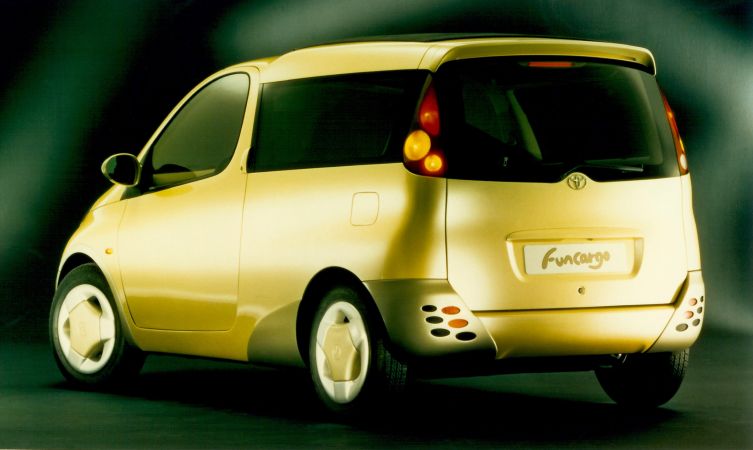
Much of the Funcargo’s novel design features were carried straight over into the production car, which was launched as the Toyota Fun Cargo (two words this time) in Japan in August 1999 and then as the Toyota Yaris Verso in Europe in January 2000.

Up to the A-pillar, the design resembled that of the Yaris hatchback but the roofline was raised an extra 180mm for incredible headroom. Meanwhile, the wheelbase and length of the Verso model were lengthened 130mm and 250mm respectively to further expand cabin space. With all seats in position it could comfortably transport five adults with 390 litres of boost space, but the flexibility of the second row of seats delivered a number of extra configurations that made the Verso unequalled within its class.

Crucially, the rear seats were split three ways, the centre section of which could act as tray space, play area or folding picnic table as necessary. With the middle seat removed, however, there was walkthrough access from the front to the luggage area and the possibility of carrying an adult’s bike lengthways inside the car as well as four passengers.
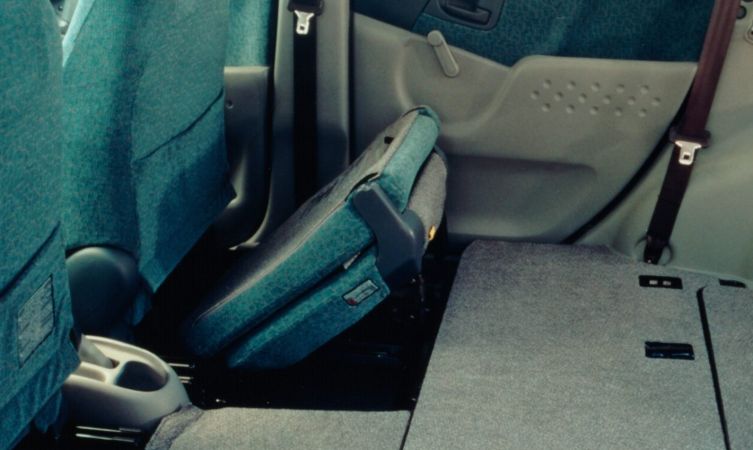
What’s more, within seconds, the two outer seats could be folded away into the floor to create a low, flat luggage area that held an incredible 2,160 litres – more than that of another contemporary MPV, the larger Renault Scenic. This figure didn’t even include the additional 230 litres of oddments space dotted around the cabin.
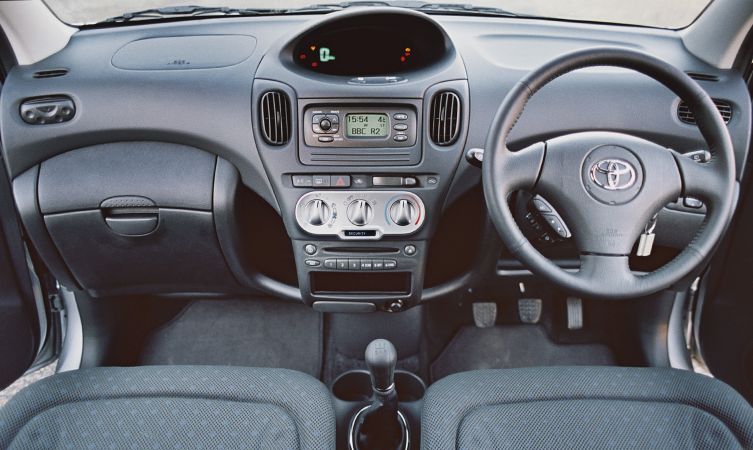
Yaris Verso was most popular with the lively 1.3-litre 16v VVT-i engine found in the regular Yaris as it was available with a choice of five-speed manual or four-speed automatic gearboxes. Within a few months of the car’s launch it was joined by a larger 1.5-litre version (manual gearbox only) that would later go on to power the Yaris T Sport model, and in March 2002 a 1.4-litre D-4D version was added to capitalise on the rapidly growing diesel market. In total, around 10,500 Yaris Verso models were delivered to buyers in the UK before the model concluded production in 2005.

Toyota’s domestic market replacement for the Fun Cargo was the Ractis, which arrived in October 2005. This Yaris-based model was never available outside of the Far East, but the following generation Ractis became spiritual successor to the Yaris Verso when Toyota used it to re-enter the B-segment MPV class in Europe.
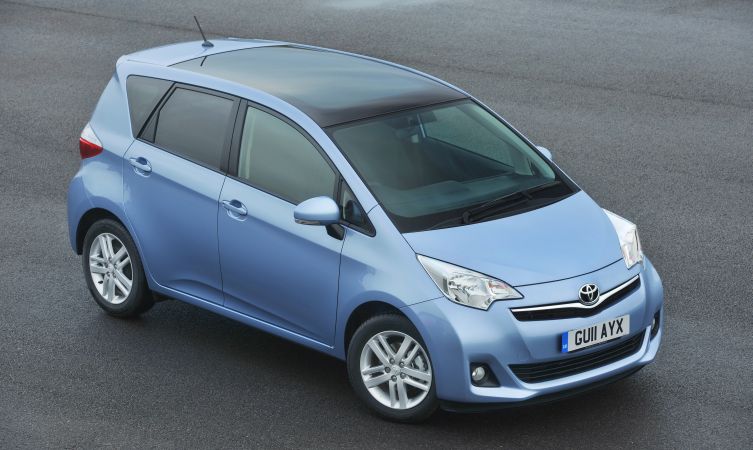
Marketed as the Verso-S (above), the model arrived in Britain in February 2011 in a choice of two trim grades. Within the now traditional monoform silhouette of the B-MPV class it was an object lesson in weight saving technologies and space management. The car was shorter than its European class rivals at less than four metres long yet had a long wheelbase that offered cabin and luggage space to rival family hatchbacks in the class above – a feeling emphasised by a full-length panoramic sunroof that was the largest in the segment.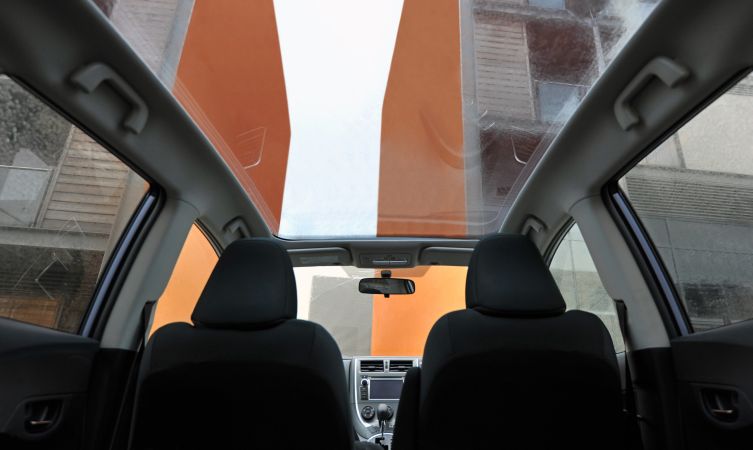
Though more traditional in terms of seating configurations compared to the Yaris Verso, Verso-S was unique in offering one-touch mechanisms for the rear seats that could be activated from the boot. With these rear seats folded flat, luggage capacity increased from 393 litres to a substantial 1,388 litres – once again without including the generous space available from a total of 19 storage compartments in the cabin. Flexibility within the boot area was improved with a lightweight deckboard that could be fixed in two different positions to adjust the loadspace depth.
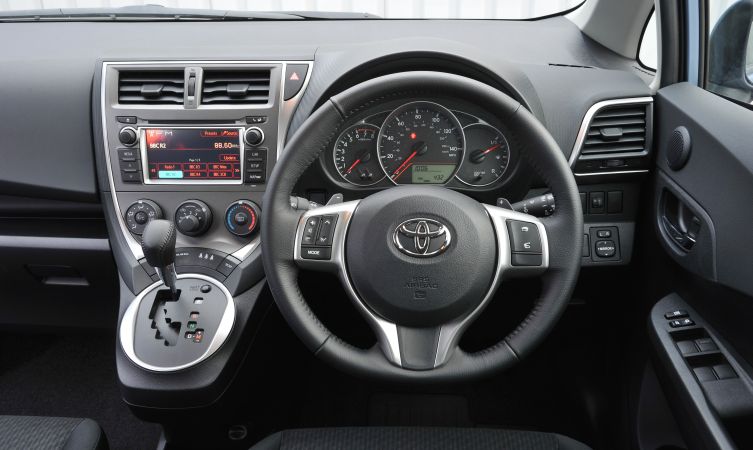
Although petrol and diesel engines were available in other markets, the UK received just one powerplant – Toyota’s 98bhp 1.33-litre VVT-i petrol engine. A decision that was vindicated when you consider that this same unit delivered the segment’s lowest CO2 emissions and best fuel economy. The engine could be paired with either a six-speed manual gearbox or an even more fuel-efficient Multidrive S continuously variable transmission.
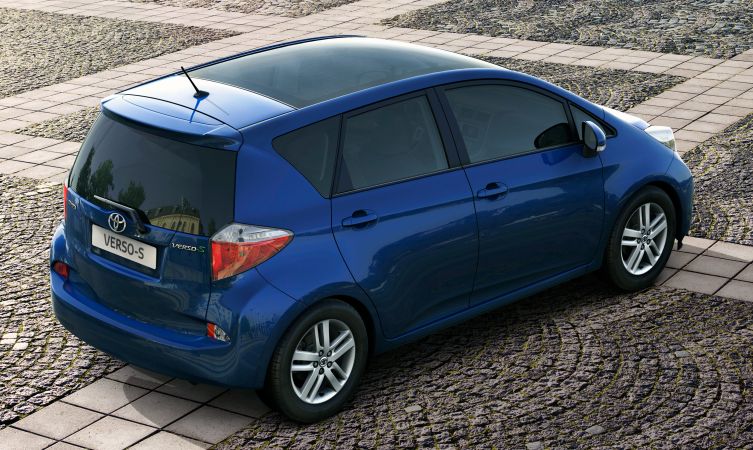
The second-generation Ractis remains in production in Toyota’s Iwate plant but sales of the Verso-S were discontinued in the UK in 2013.
COROLLA VERSO TO VERSO
Having recently introduced Verso as the name for MPV derivatives of the Yaris and Avensis (see subheading below) at the turn of the Millennium, nobody was under any illusion as to the nature of the Corolla Verso when it was introduced in the UK in 2002.
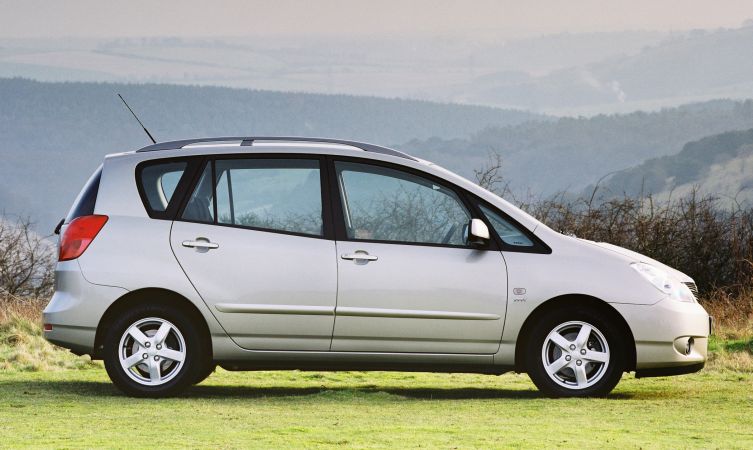
The car was one of four body styles produced within the ninth-generation Corolla range. But while this practical version was new to Europe, it wasn’t the first time that an MPV model had joined the Corolla range in Japan. That honour went to its predecessor, the 1997 Corolla Spacio that was part of the eighth-generation Corolla range.
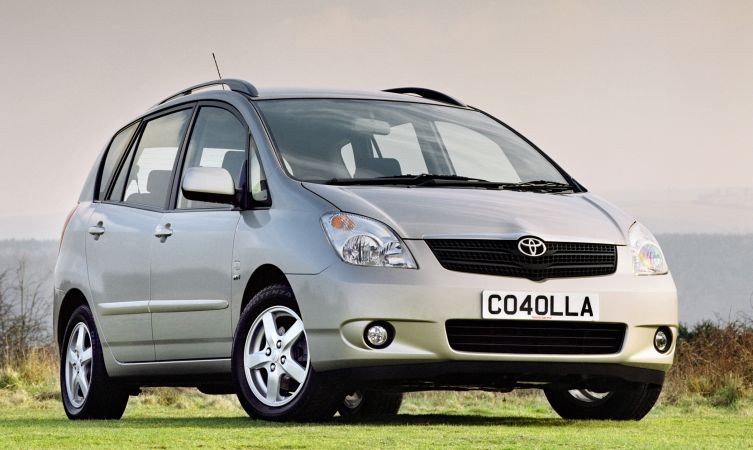
As the third Verso model in Toyota’s growing arsenal of sub-Previa MPVs, the well-received Corolla Verso accounted for almost one-quarter of all Corolla sales. It was a versatile vehicle that offered intelligent use of space, optimal comfort for up to five people, and a convincing luggage area with at least 417 litres of space. This carrying capacity could be increased to 973 litres and a maximum load length of 1,640mm with the rear bench folded.

Special attention was paid to how the model assisted growing families. It was equipped with two ingenious junior seats-within-a-seat on the 60:40 split rear bench and was prepared for the installation of ISO-FIX mounting points. The rear seats could also be tumbled, reclined and slid backwards and forwards by 150mm to provide more legroom or luggage space.
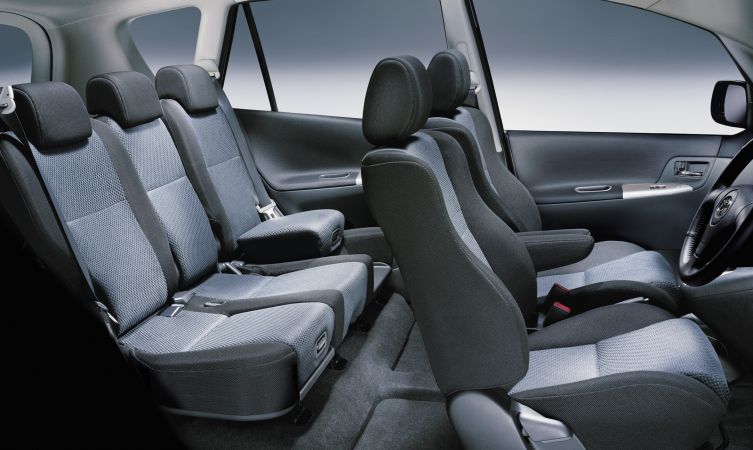
From launch, Corolla Verso was available with three engine options: 1.6- and 1.8-litre petrol units with 110 and 135bhp respectively, and a torquey 2.0-litre turbo diesel with 89bhp. A four-speed automatic transmission could be specified on the 1.8 in place of the standard five-speed gearbox.
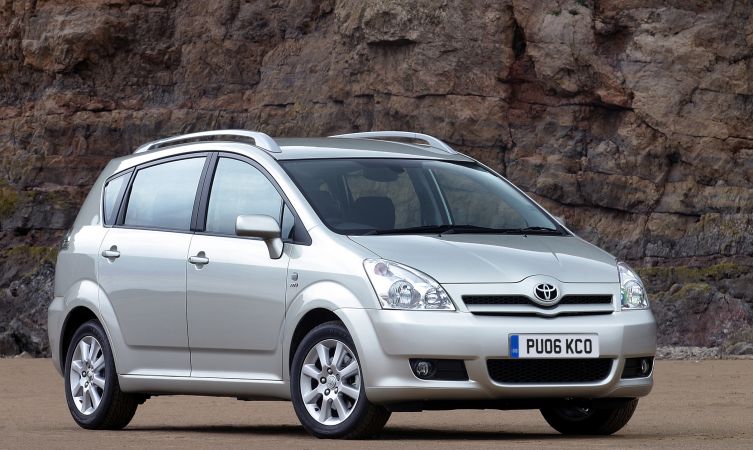
The all-new next-generation Corolla Verso (above) arrived in the UK just two years later, on 1st May 2004, and was one of the first Toyota models to be designed outside of Japan. Penned by Toyota’s ED2 design centre in the south of France, its strong Avensis-based platform made the car taller and wider than before, but smooth lines helped it achieve a best-in-class drag coefficient figure. This achievement was partly possible through a 67 per cent reduction in panel gaps – the same standard found in Lexus models.
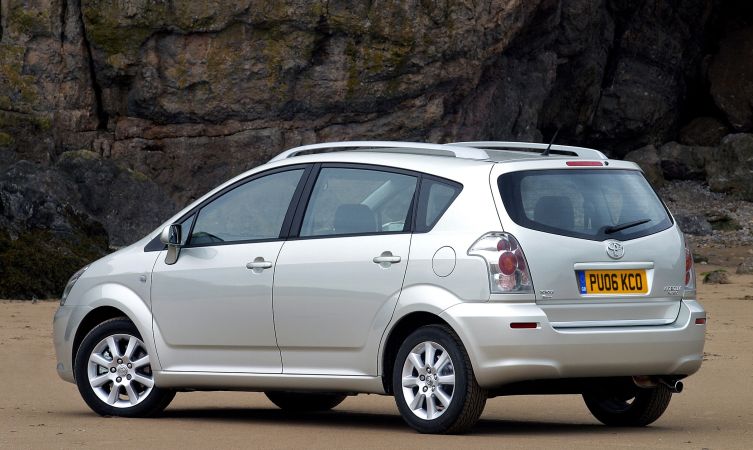
The new Corolla Verso reflected a new primary focus toward the European market, with dynamic driving characteristics and fully-fledged MPV practicality thanks to its ability to seat seven people. At the time of its launch, no other C-segment MPV was able to fold down all rear seats individually to create a perfectly flat load floor, and certainly not in the single motion of the Toyota Easy Flat-7 system (see below). There was a total of 32 different seating permutations.
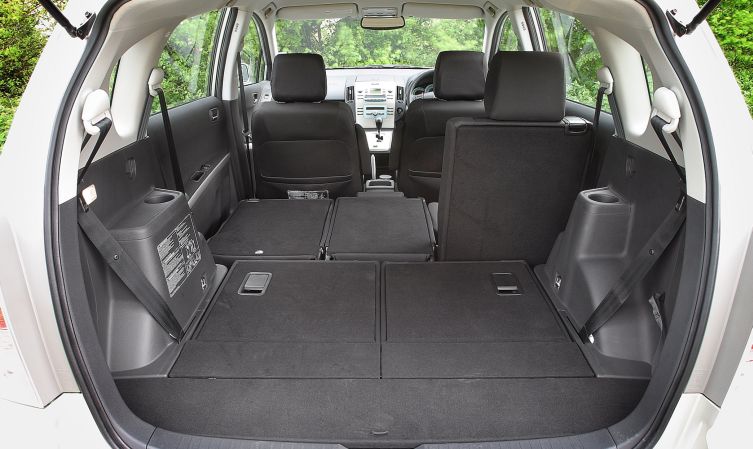
Like its predecessor, the Corolla Verso offered the same combination of petrol and diesel engines, though all were either new or thoroughly revised. A simplified grading structure (T2, T3 and T Spirit) came into effect at the same time, which meant the entry-level 1.6-litre petrol engine was only available in the base model, while the 1.8 petrol and 2.0-litre turbo diesel could be specified across the entire range. In addition, the top-selling 1.8 could be specified with a new MMT (Multi-mode Manual Transmission), which married the advantages of both automatic and manual transmissions in one electrically automated unit.
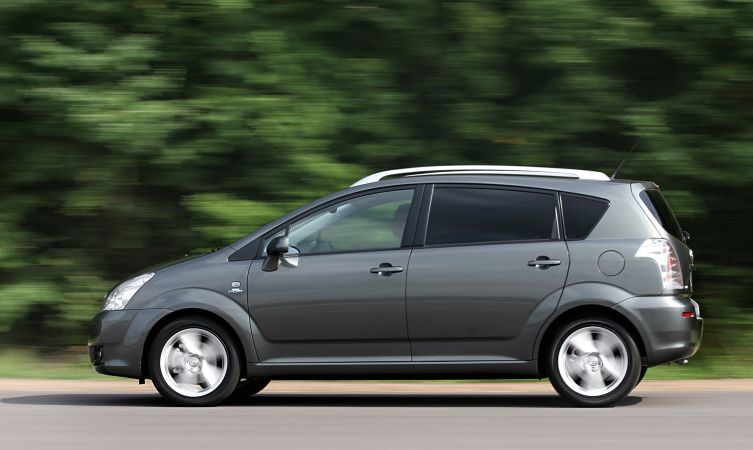
Two new all-alloy 2.2-litre D-4D diesel engines were introduced in November 2005. A D-4D 140 with 134bhp was a direct replacement for the outgoing 2.0-litre, while a high-tech D-4D 180 version with 175bhp endowed the flagship model with the most powerful engine in its class and almost hot-hatch levels of performance. Both engines were paired with a new six-speed manual gearbox.
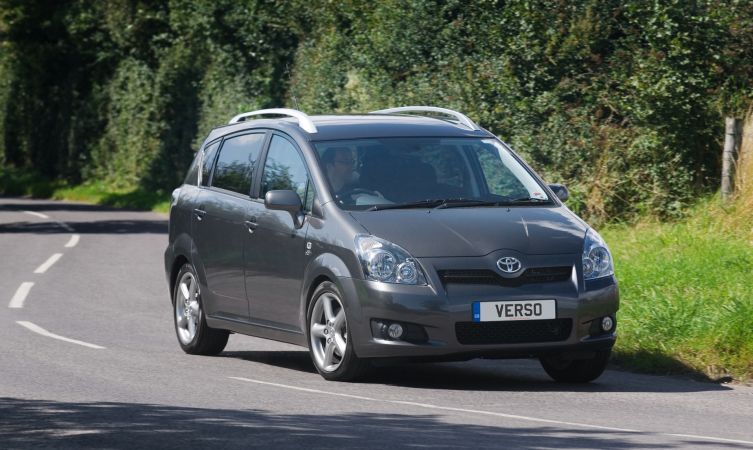
At this point the first-generation Auris was waiting in the wings to replace Corolla, so Toyota began phasing out use of the Corolla name in all press material. By the time a minor refresh was applied to the model in July 2007 (note new grille and headlamp treatment above), the model had become widely known as the Toyota Verso.
The third-generation Verso (see above) was unveiled at the Geneva motor show in March 2009 and went on sale in the UK the following month. Unlike its predecessors, the new car was not a derivative of another model in the Toyota line-up; it stood on a bespoke platform. Once again designed and built in Europe, but this time for Europeans only, the car improved on every quality of the outgoing model, with greater practicality, space and desirability.
Despite offering the mobile equivalent of open-plan living, the new Verso had the acoustic comfort and dynamic abilities of a conventional passenger car. The convenient Toyota Easy Flat-7 system was fine-tuned, with special attention paid to the comfort of passengers in the second and third rows. Luggage space was up, too, the car now able to swallow loads up to 1,830mm long.
But perhaps most importantly for this generation was the introduction of Toyota Optimal Drive technologies to the entire range. This broad application returned increases in engine power of up to 20 per cent, while fuel economy and CO2 emissions showed class-leading improvements of up to 12 per cent compared to the outgoing model.
The three-grade UK range was initially offered with a choice of either 1.8-litre Valvematic petrol or 2.0-litre D-4D diesel engines. A more powerful 2.2-litre D-CAT model with six-speed automatic transmission became available in the summer of 2009, and an entry-level 1.6-litre Valvematic followed later on. Six-speed manual gearboxes were fitted as standard but the 1.8 could also be specified with an efficient Multidrive S continuously variable transmission.
Safety had been a high priority for the European development team, especially in view of incremental increases by the Euro NCAP body that had already come into effect in 2009 and would get even more strict in 2010 and 2012. In the first round of tests, Verso was one of the only vehicles to achieve a five-star safety performance. That result was corroborated in 2010 and Verso was once again confirmed as the safest compact MPV on the market.
A comprehensive, 300-component refresh was launched in January 2013, which strengthened the overall design and brought the front-end styling into line with a new keen-eyed product offensive spearheaded by the next-generation Auris.
At the same time, the 2.2-litre diesel automatic was deleted and a new grading structure – Active, Icon and Excel – introduced that gave buyers the option of an affordable five-seat entry level model. The 2.0-litre D-4D engine continued until early 2014, when a highly-efficient BMW-sourced 1.6 D-4D unit (above) became available that offered 62.8mpg on the combined cycle. This was the first manifestation of a wider collaboration between Toyota and the BMW Group.
Click here to learn more about the current Toyota Verso.
PICNIC TO AVENSIS VERSO
The Toyota Picnic (known as Toyota Ipsum in the domestic market) was the manufacturer’s first entry into the compact MPV market. Billed on its UK launch in January 1997 as the start of a new market sector, it was a compact family car that was more practical than an estate, and more agile and less expensive than an MPV. Aimed at the ‘baby boomer’ generation, of which more than 71 per cent apparently had children of their own, the Picnic was designed to carry the common 2+2 nuclear family plus a couple of grandparents on fun days out.
Built on an entirely new long wheelbase platform, the Picnic was similar in length and width to most upper-medium sized cars but stretched 210mm higher. A large glass area contributed to the feeling of space and the look was finished off by a distinctive rear quarter with an elegant, rear-sloping D-pillar designed to mask what was to all intents a relatively boxy shape. Nevertheless, the Picnic was able to cut through the air with a drag coefficient of Cd 0.326.
Although the first Picnic models to arrive in the UK were built to accommodate six passengers with a layout featuring three rows of two seats and 17 different seating arrangements, that was later expanded with the appearance of a seven-seat version with a 2-3-2 seating layout. The rearmost seats were easy to remove entirely from both versions, and doing so increased luggage capacity from 182 to 1,177 litres. Folding down the seat backs of the middle row and pushing the seats forward boosted that to 1,841 litres. But you could also configure the front and middle seats to make a double bed.
Three generously equipped trim grades were available from launch – GS, GL and GX – but only one engine option. That was the 2.0-litre 16v four-cylinder petrol engine also found in the RAV4, which was tuned to produce 126bhp. Offered with a choice of either five-speed manual or four-speed automatic transmissions, the Picnic was faster and more flexible than many expected with acceleration figures of 11.2 and 11.7 seconds respectively. A mid-life revision in August 1998 extended the engine range with a 2.2-litre turbo diesel option – the Picnic therefore became the first Toyota MPV to receive a diesel engine in the UK market.
To British eyes, there was no obvious connection between the Picnic and its successor, the Avensis Verso (above). After all, the new car sat on another all-new platform, had a new naming strategy, was larger in proportions, and was designed in Europe. But despite these differences, in Japan this new car was actually the second-generation Toyota Ipsum.
Revealed to the world at the Geneva Motor Show in February 2001 and launched in the UK in August 2001, the Avensis Verso was the second model to receive ‘the Verso treatment’, thereby becoming a new sub-brand for Toyota in Europe. Approximately 50mm lower than its main rivals, the model eliminated the top heavy van-based look that had become synonymous with the breed and was designed to create a unique blend between MPV and executive passenger car.
The Avensis Verso had the longest cabin length in its class, a low floor and long wheelbase, a good proportion of which was dedicated to ensure that there was enough luggage space for all of its seven passengers. With that in mind, the seats in the second row could slide forwards and backwards and, like the third row, could be folded, tumbled or removed entirely for an immense 2,422 litre luggage capacity. Both rows could also be converted into tables. Meanwhile, underfloor storage was included to boost storage when all seats were in place.
All models were powered by a 2.0-litre engine, though you could choose between a 147bhp VVT-i petrol unit or 114bhp D-4D turbo diesel with the latest common rail technology. Both engines were class-leading in one way or another – the petrol in terms of performance and the diesel in terms of fuel economy.
A minor facelift was applied to the Avensis Verso in January 2004, with a new front end featuring more pronounced headlamps and a new bumper design (see image above). In addition, greater emphasis was put on safety thanks to the inclusion of front side airbags and front curtain shield airbags as standard equipment. The model was discontinued in Japan in December 2009 but sales of the Avensis Verso concluded in the UK in 2006.
See also:
History of the Toyota 2000GT
History of the Toyota Camry
History of the Toyota Carina
History of the Toyota Celica
History of the Toyota Corolla
History of the Toyota Hilux
History of the Toyota Land Cruiser (Station Wagon models)
History of the Toyota Land Cruiser (Heavy and Light duty models)
History of the Toyota MR2
History of the Toyota Previa
History of the Toyota Prius
History of the Toyota RAV4
History of the Toyota Sports 800
History of the Toyota Supra
History of the Toyota Starlet
History of the Toyota Yaris


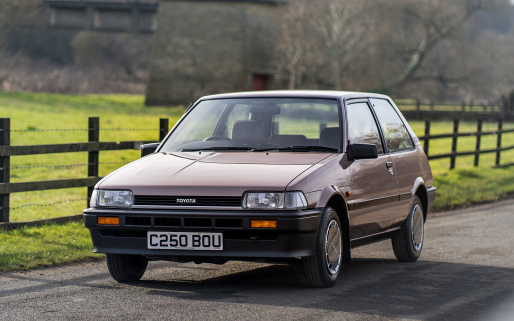
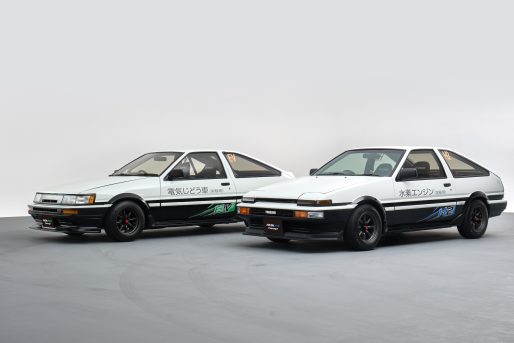
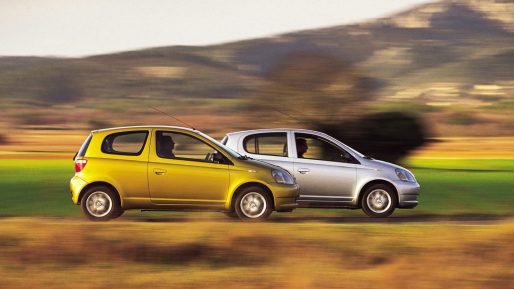
There was never a 1.5 Yaris Verso in the UK. They were sold just about everywhere else, but not the UK 🙁
The Picnic is a family legend and is much lamented. A wonderful car.
Verso S best car ever had.
Most stylish B-MPV in the market
Most stylish B-MPV in the market and the best car I ever had. Expecting a car in the market with similar design.
best car I ever had. Expecting a car in the market with similar design.
Most
Most stylish design in the B-MPV segment, best car I ever had. Expecting a car in the market with similar design.
is
Most practical car made in the last 40 or so years. Nothing ever came close since. Wish they brought it back. Toyota Yaris Verso ftw!